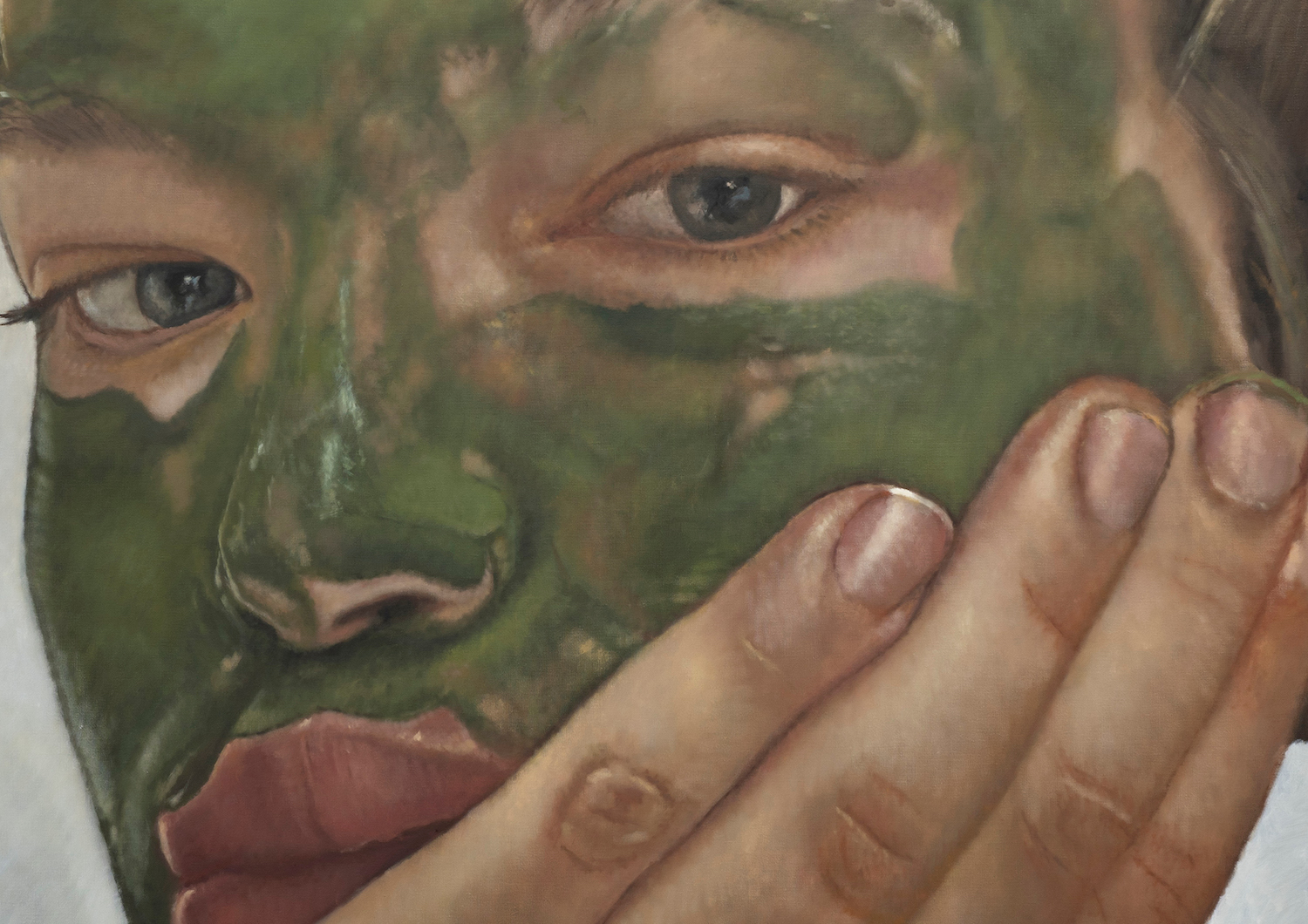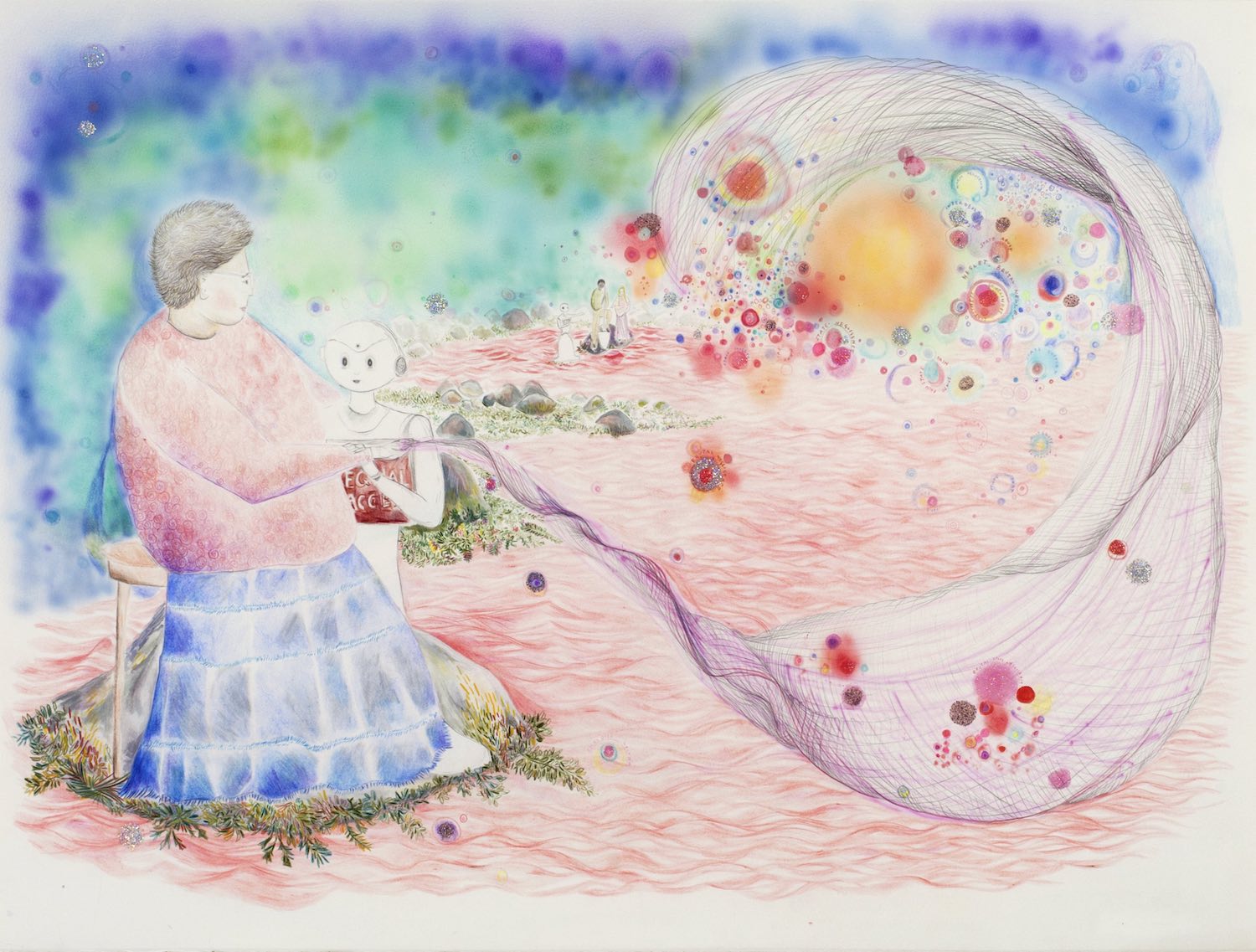“Curator” is a pretty new word. It has made its way into dictionaries over the past few decades, and we only started talking about “curatorial studies” in the 1990s. But hey, we’re all about new methods and attitudes around here. For our new column focusing on experimental curatorial and editorial approaches to gallery culture, we played around with words. We present “The Curist.”
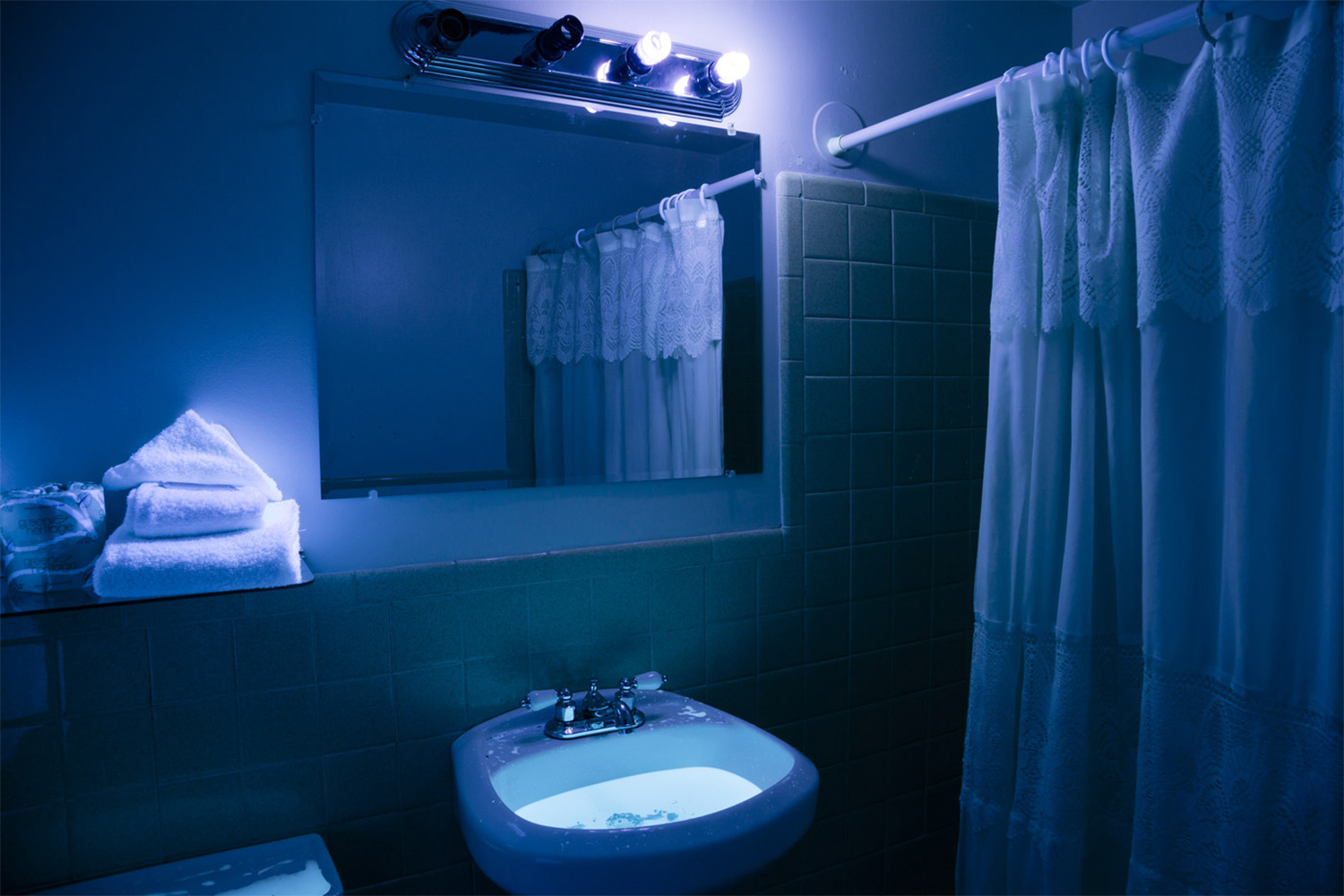
Ginny on Frederick is a gallery in London’s Smithfield Market, founded in 2020. It’s named after founder Freddie Powell’s mother, and the street where the first branch opened on Frederick Terrace, in Hackney. (They used Ginny’s credit card to pay for the rental of a motel in New England where the first show was held; it’s only fair she got naming rights.) It’s now in a converted sandwich shop in Clerkenwell, still with the original tiling and former name above the doors, but without running water or a desk. It’s probably the most exciting space in London. Lots of people have been saying this.
The familiarity of the name mirrors the intimacy of the programming: Powell’s shows have been almost exclusively with friends, or friends of friends. Alexandra Metcalf, Tommy Xie, Jack O’Brien, Tom Worsfold, and Freddie’s partner Lewis Teague Wright have all had shows or shown work there. Bruno Zhu stuck a pixelated close-up of a model’s face to the glass doors, and Eva Gold turned the, let’s say, intimate space into a seedy film set, complete with red light and rubber anoraks.
The gallery speaks to, and reflects, our remarkable historical moment. The original space was shut down during COVID, and the new one launched during the pandemic. Even more so, coming out of the cheap-money, high-returns era crashing around us, it tells about the possibilities for working tight, acting small, and thinking big.
One group show looked at the idea of “civil twilight”: the delightfully named time right after sunset, when, according to the press release, “the geometric center of the sun is at six degrees below the horizon.” The golden hour, I guess — when the day is most definitely done, but the night can be imagined, and everyone looks great. A liminal time, in a liminal space, for a liminal age. Anyway!

RISD & FIRST SHOW
Charlie Robin Jones: Let’s start at the beginning. You studied at the Rhode Island School of Design, right?
Freddie Powell: Yeah, and I studied printmaking. There is an ongoing joke — that is fundamentally true — that I was not an art student. I was so bad at the studio work. I failed freshman year even, but I was so obsessed with just being around with these other artists. I realized that I couldn’t spend all that time by myself in the studio, so I thought having a gallery is the next best thing.
CRJ: You had your first ever show at a motel. Tell me the story.
FP: It was with Alexandra Metcalf, who I was at RISD with. She had been living in New York, and I was just about to graduate, and we wanted to do a project. Alex had made all these different kinds of works: helium balloons, these giant keys that she made, and then we put them on the bed. She figured out if you pour soda water around, it glows in blacklight. It was like a black-lit crime scene. It was mad. And that was the first thing we did. Me and Alex slept in the motel. And, like, ten people came.
CRJ: This is kind of a dumb-bitch question to ask, but what is it about putting on art shows that brings you joy?
FP: The impulse was that Alexandra is one of the most incredible, interesting people I’ve ever met. Full stop.
I think it’s easy to historicize that I was an “innate facilitator,” but really it was as simple as, “I love this person, she is sick, and, damn, I want to do something with her.” So that then led to actually figuring out what the project looks like. We were both figuring it out, which is, really, the most exciting part of doing a show.
CRJ: It’s so funny. Many of the best galleries begin as, essentially, social imprints. Friends have parties, parties become events, events become shows.
FP: The whole thing is accidental.
CRJ: From that very first show, did you think, “I’m going to be a curator”?
FP: Yes and no. No, because my favorite curators — the ones I respect the most — are really rooted in a writing practice, and I don’t have that. I can, you know, write and whip out a solid press release, but I don’t have a research-based writing process.
CRJ: Can you name some of those curators you really look up to and respect?
FP: I love what Ebony L. Haynes is doing at 52 Walker, and what she was doing with Shoot the Lobster. I also love what Eliel Jones did with the Brent Biennial. There’s such a vocational basis to it. Maybe I’m programmed to see
“curating” inside this institutional context. Whereas I do actually think what I do here is more of a facilitation. But, as you say, the basis of this program is all rooted in these really close friendships — or friends of friends that have become friends. I’ve still yet to work with an artist on a purely professional basis. That is changing, especially as the program develops and the pace of the program is accelerating. I opened Ginny two years ago, and now I do Frieze London. It’s quite crazy. I mean, I guess I’m a curator? But quickly that became a dealer, which almost feels like the dominant way of describing what I do.
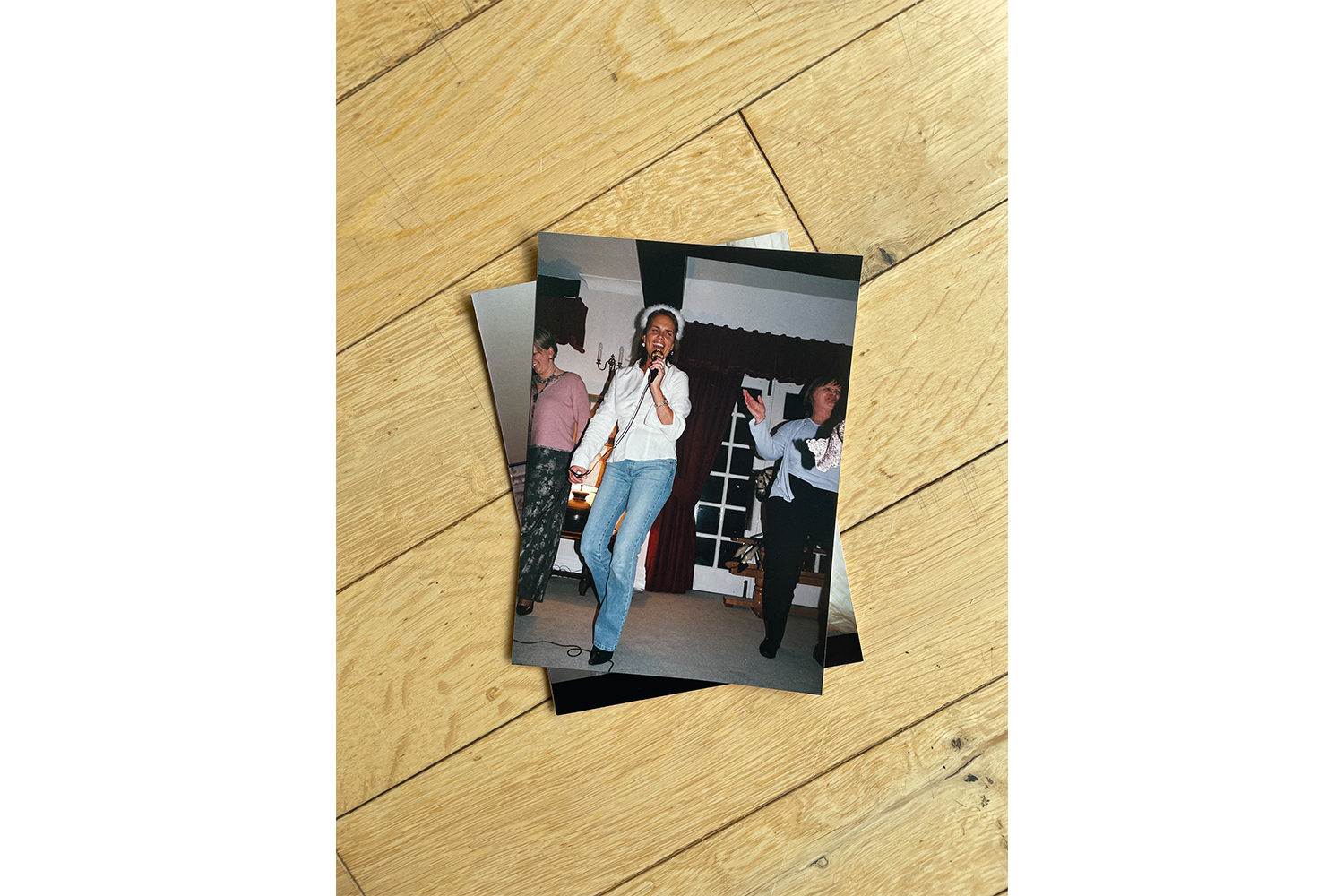
OLDER SHOWS
CRJ: Can you tell me about some of your earlier, itinerant shows?
Literally itinerant, in the sense that your mum moves around, and you hosted an exhibition around her neck.
FP: Yeah! It was with an artist I went to RISD with, called Haven Kim. She’s actually no longer making art. She does film production design. She’s a Hollywood girl. But she made this necklace. And my mother wore the necklace. And the idea was that you meet with my mother to see the show. I mean, there wasn’t a massive audience — it was only banger of an idea.
CRJ: This is exactly the idea, though, right? Like, this is a show exclusively for close friends.
FP: It was also because I’d just moved back to London and didn’t know anyone to see it! And then I did another one on the train line from Hertford East, where I grew up, to Liverpool Street in London. It was eleven or twelve artists, each showing work at each station. We rode the train to see all of the works.
CRJ: Amazing. Was that with the blessing of the London transport authority?
FP: No …
CRJ: So, you were just hanging out.
FP: Yeah, I just hung them up. Some of them were sculptures, some
of them were little elements. One was an iPod that was left at the station, to listen to something.
CRJ: Incredible. How did you secure the iPod?
FP: I didn’t. [laughs] I just left it. We were post-iPod at this stage.
CRJ: Amazing.
FP: And then I did a show with Lock Up International, in Bermondsey. While I was working at White Cube, I would run out on my lunch break to do the appointments. Lock Up International was set up by Lewis [Teague Wright], my partner, and it’s an incredible itinerant project where he organizes shows in secure storage units all around the globe — in Tokyo, in Mexico City, Frankfurt, Brussels, London. And then that’s when I did the shows with Kira Freije, Justin Chance, and Bruno Zhu — I was starting to work with artists who, you know, were becoming my peers. And, you know, real people started to come to see it. And then I was invited to do a show in Leipzig, at Fonda, right before COVID. I ran to Leipzig with my best friend, Song-I Saba, did another opening with, like, ten people, and COVID stopped everything for a year and a half.
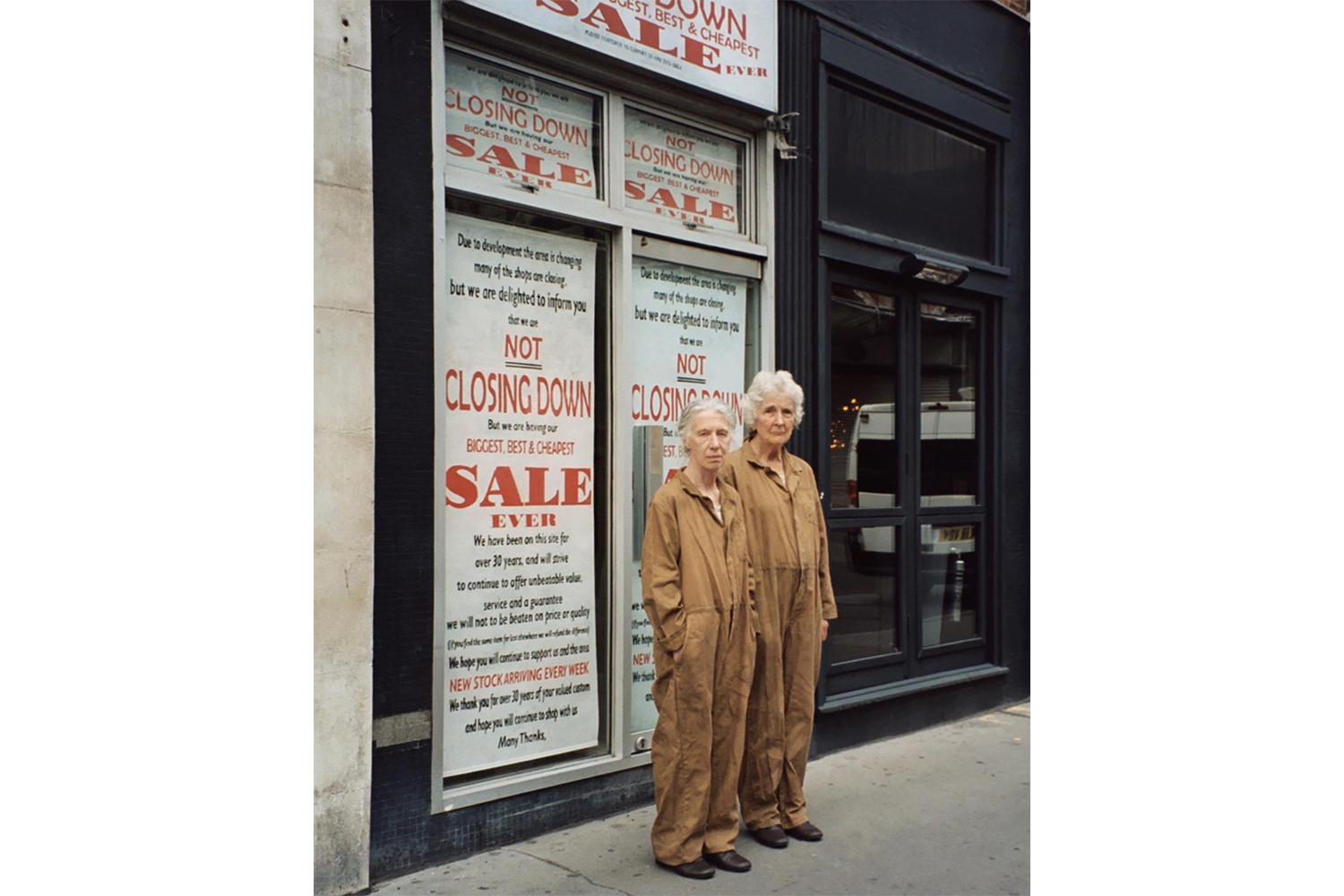
COVID AND LAUNCH
CRJ: So, we’re coming up to the big sadness. When COVID hit, you had just signed the lease for the first Ginny — the original Ginny on Frederick — right?
FP: I just had time to paint the walls and paint the floor. I did a group show with five people. And then COVID hit, and I had to exit the lease. I really felt like I was doing something, and I was really sad when it closed. [pause] It took a year to… I mean, I didn’t have a terrible pandemic — I was living in the Barbican, it was gorgeous. But my parents got very sick, both with cancer, and seeing them sick was very difficult. They have always been very sensible people, very “get a job, stick to a job” people. But when they recovered, and during their recovery, they became very much attuned to seizing the day: you only live once, and you have to go out and do it. So, I was stuck inside watching “Broad City” over and over and over again. And I said, “I have to figure it out.” And then, on one of my long lockdown walks around the market, I found this.
CRJ: I’m so sorry to hear about your parents. That’s so tough.
FP: If I ever went on “The X Factor”, I would definitely make it through to the live shows, because I’ve got an incredible sob story.
CRJ: Oh god, yes. So, when did you sign the lease on this place?
FP: I signed the lease on this place in the summer of late 2021. I spent a few months slowly painting the ceiling: it was Rihanna red, and now it’s white, and that’s all I did. And then I opened in September with a show by Jack O’Brien, who was meant to do the next show at the Hackney space. I mean, that show would have been great. But it was really fantastic [in this space]. Now, me and Jack still work together. It’s been, you know, one of the most amazing relationships of my whole life.
CRJ: What was that like, emotionally? You have your first place, then calamity, and then you have to trust in this new place.
FP: I was just so excited to be out of the house. I went in there like a whirlwind. When we opened up and started showing, it felt real. And, you know, at that point, it wasn’t so much about selling. But we managed to sell one thing and I was like, “I’m an art dealer. This is crazy.” And I just learnt from that.

“DEALER”
CRJ: So, we spoke about your work as, let’s say, a facilitator. Does being “an art dealer” mark a shift?
FP: I think I’m still doing both right now. At that time, I didn’t have the vocabulary or, like, the ability to know how to sell sculpture or Jack’s work. Now I’m super confident doing that. But then, I was still very much looking at the curatorial project as a project space that was only open on the weekends. That lasted until probably four shows. And then I did a show with Tom Worsfold, which sold out, and I was able to quit. And while it was nowhere near enough money to put into it, it just felt like there was a real energy behind the space.
CRJ: Ginny on Frederick is as old as the pandemic. Have you noticed a shift in what a gallery even is?
FP: I think London is becoming increasingly hostile to anyone in the creative industries. It is. So I, you know, I’m feeling more responsibility to get people paid. And that just means me professionalizing a little bit. I don’t use TikTok — I get very easily addicted to things — but I saw a TikTok of our Heavenly Father, RuPaul, saying, “If you want to make money, you got to wear a suit.” So, currently, I’m figuring out if I should move to another space. Should I keep this space? Is everyone gonna hate me if I don’t have the tiles? Am I nothing without my tiles?
CRJ: That would be a major worry for me.
FP: But also, I have to wrap myself in some mirage. [pause] And I need an office, or a toilet.
CRJ: You can dream.
FP: I’m a humble, humble boy.
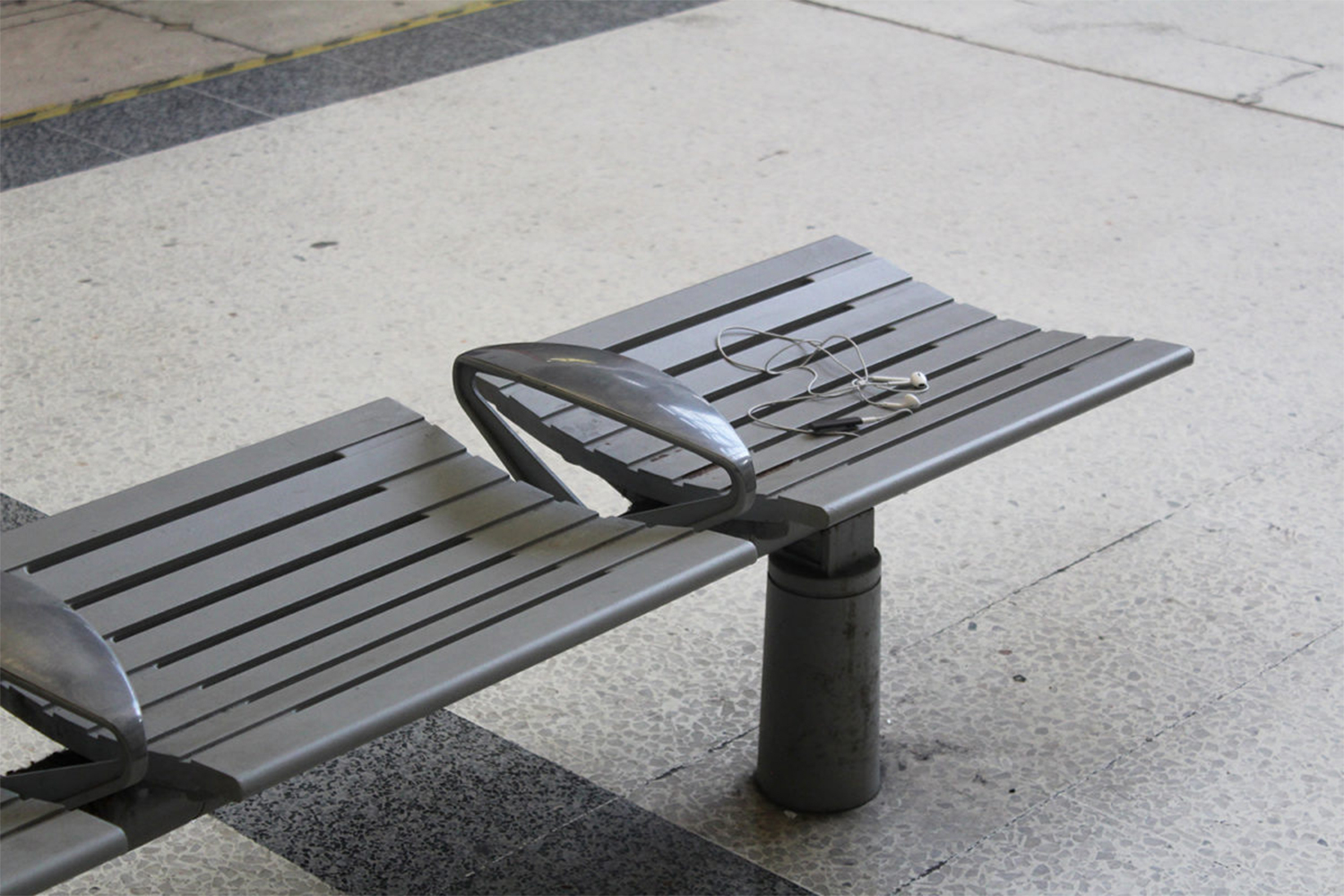
THINK SMALL
CRJ: So, the space. In some ways it’s absurd to ask about the “creative constraints” of this space — because, to me, this is a story not about the smallness of this space, but the possibilities of finding space and occupying it. But, still, the constraints of space are part of the story, and a material that artists work with, and around.
FP: It’s architecture!
CRJ: Everything is architecture! To get specific, let’s talk about the amazing show by Eva Gold, with rubber jackets stretched across one corner. Does a space like this concentrate ideas in some way?
FP: Pretty much all of the artists made the work for the show. I’m not someone who trawls studios to find work to show.
CRJ: You’re not that bitch.
FP: I don’t want to negate that. But actually, I do — I think it’s kind bullshit.
So, everyone knows the space, and knows they’ll be showing here. Anyway, with Eva, these were some of the works in progress, and tiles contributed to the feeling in which she wanted to show the works. Eva spoke to me about showing them, and it was too perfect. It looks like a film set. And that really crystallized these major ambitions that the place had. Even Jack, in the first show, made works for the space, perfectly aligned from the ceiling to the floor. I’m constantly amazed by the artists’ ambition in the space. The tiles can be cruel to work with: you can’t hang in specific places and there are holes everywhere, there’s plug sockets everywhere. This isn’t a clean install. But that doesn’t mean the shows aren’t sleek, or tight. It has context.
CRJ: So, final question. Maybe I’m asking this to help with my practice, but… I wonder about the value in, let’s say, thinking small. Especially in this new era, I’m increasingly fascinated by those with a very concentrated practice. Those that have, like, Napoleonic ambition but still kind of operate from a position of radical smallness. Do you know what I mean?
FP: I mean, it’s like a type of cosplay, right? Cosplaying as a project space, or a sandwich bar. Or a fucking bathhouse. And then it’s also an art gallery. What’s made the program bigger is that I’ve been lucky or smart or savvy enough, I don’t know, to do a lot of work outside here. We’ve done fairs, a show at Sadie Coles HQ Shop and at Sans titre in Paris, which were really generous and incredible. I look up to Sadie and Marie & Eloi [from Sans titre] so much; and now I’m working on a show in China at LINSEED Projects in November. And then, still keeping this tiny place. You can, like, stretch out your arms and probably touch both walls. And that’s the perfect level of business and ridiculous.

